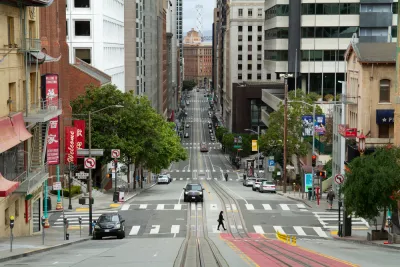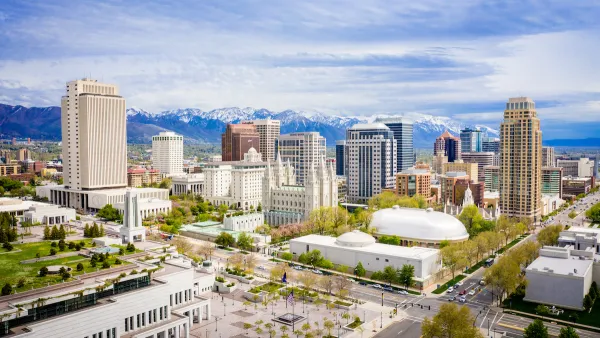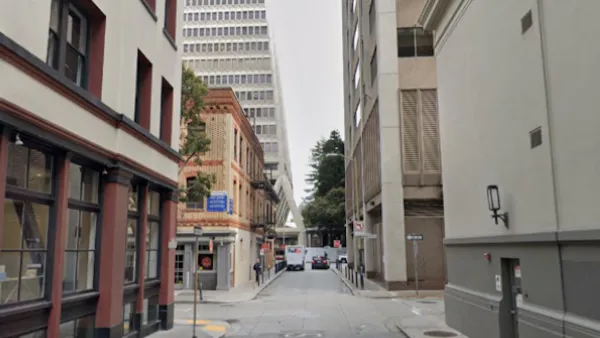The recovery of U.S. downtowns is happening at widely different paces depending on which city you consider.

A recent analysis by the Institute of Governmental Studies at the University of California, Berkeley compares the recovery of downtowns using new data provided by mobile phones to expand beyond the typical indicators of downtown vitality: office vacancy rates, public transit ridership, and retail spending.
The study finds wide variation in downtown recoveries, ranging from a low of 31 percent of pre-pandemic levels in San Francisco to a high of 155 percent in Salt Lake City. The key factors influencing these outcomes, according to the study, are “population and business densities, commuter mode shares particularly high car use, along with presence of industry sectors that are continuing to support remote work (such as tech and finance),” according to the policy brief that supplements an infographic-oriented website to share the information released with the study.
The release of the study has inspired some local media coverage, including an article by Mike Rogoway for the Oregonian examining Portland, Oregon’s “sluggish” recovery (only San Francisco and Cleveland fared worse, according to the study). An article by Snejana Farberov for the New York Post was quick to point out how many cities are doing worse than New York recovering from the pandemic. An article by Roland Li for the San Francisco Chronicle recently made a similar point without citing the Berkeley study.
For more research into the uneven recovery from the pandemic, see also research published by the Brookings Institution in June 2022, which also identifies winners and losers among metropolitan areas in the new, post-pandemic normal.
FULL STORY: Death of Downtown?

National Parks Layoffs Will Cause Communities to Lose Billions
Thousands of essential park workers were laid off this week, just before the busy spring break season.

Retro-silient?: America’s First “Eco-burb,” The Woodlands Turns 50
A master-planned community north of Houston offers lessons on green infrastructure and resilient design, but falls short of its founder’s lofty affordability and walkability goals.

Delivering for America Plan Will Downgrade Mail Service in at Least 49.5 Percent of Zip Codes
Republican and Democrat lawmakers criticize the plan for its disproportionate negative impact on rural communities.

Test News Post 1
This is a summary

Test News Headline 46
Test for the image on the front page.

Balancing Bombs and Butterflies: How the National Guard Protects a Rare Species
The National Guard at Fort Indiantown Gap uses GIS technology and land management strategies to balance military training with conservation efforts, ensuring the survival of the rare eastern regal fritillary butterfly.
Urban Design for Planners 1: Software Tools
This six-course series explores essential urban design concepts using open source software and equips planners with the tools they need to participate fully in the urban design process.
Planning for Universal Design
Learn the tools for implementing Universal Design in planning regulations.
EMC Planning Group, Inc.
Planetizen
Planetizen
Mpact (formerly Rail~Volution)
Great Falls Development Authority, Inc.
HUDs Office of Policy Development and Research
NYU Wagner Graduate School of Public Service





























